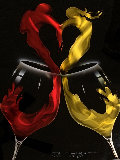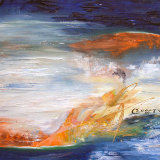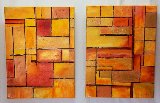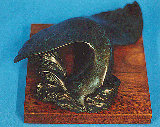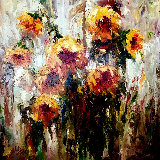





Statue and Flag
Neil J. Farkas
Limited Edition Print : Embellished Serigraph on Canvas
Size : 26x20 in | 66x51 cm
Framed : 29x35 in | 74x89 cm
Edition : From the Edition of 860
Motivated Seller
- 🔥Framed Embellished Serigraph on Canvas $2,300
Hand SignedLower Right in Marker
Condition Other - small wear on frame
Framed with PlexiglassBlue Wood Frame w/ White Mat
Purchased fromOther 1999
Certificate of AuthenticityArt Brokerage
LID158637
Neil J. Farkas - United States
Art Brokerage: Neil J. Farkas American Artist: Paragons of cultural identity receive the exacting, ruptured attention their classic status merits when their image is rendered via the talents of Neil J. Farkas. Icons, folk idols, national and world symbols that have transcended social or anthropomorphic norms are revitalized and reexamined on a human level through his extractions of their pure aesthetic potential. The Florida-based Farkas has exhibited extensively in the Midwestern United States, including showings at the Scarab Club of Detroit; Art Space Gallery of Birmingham, Michigan: Lawrence Street Gallery of Pontiac, Michigan and the Detroit Institute of Art. Farkas has recently completed a commissioned project for the National Baseball Hall of Fame. More recently, Farkas' image One Flag was acquired by the Smithsonian Institution and exhibited in the Septembers' exhibition at the institution's National Museum of American History. An example of this work is also in the permanent collection of the New York City Public Library. Commenting on his own work Neil says, "As a product of America's turbulent 60's, it is no surprise that much of my work examines the Pop Art movement, perhaps pushing it forward with new digital technology. My technique is called photo-synthesis. I see myself as a photo realist by definition. Principally, I work with the tools of the digital age; however I deliver my work in the traditional means of lithography and serigraphy, sometimes combining both mediums within the same print. Farkas uses tiny tiles of other photographically based images as a proxy for brush-strokes to create and model his larger subject. On closer inspection, the entire image he depicts dissolves and leaves the viewer engrossed in a myriad of tiny tiles of individual scenes adhering to the picture surface. One cannot help as well, contemplating the meaning of his selection of the individual images in relation to the meaning of the subject he portrays. Listings wanted.





























